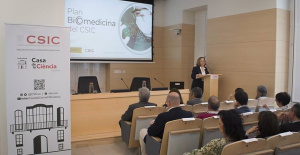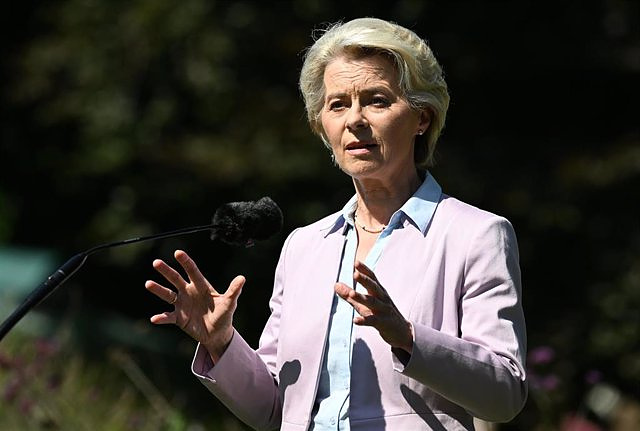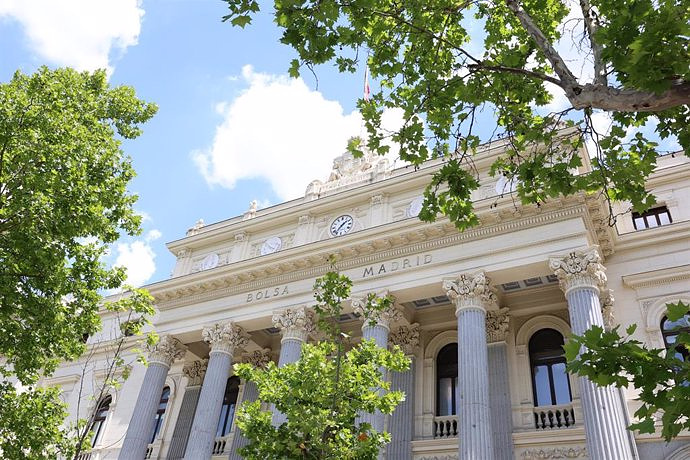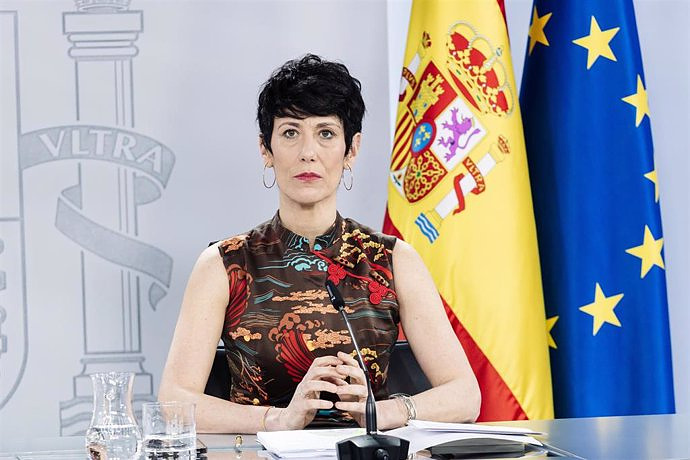MADRID, 7 Sep. (EUROPA PRESS) -
The gross domestic product (GDP) of the area registered in the second quarter of 2022, an expansion of 0.8% compared to the first quarter of the year, when growth was 0.7%, according to the latest estimate of the data published by Eurostat, which represents an upward revision of the growth of 0.6% previously estimated.
For the European Union (EU) as a whole, the GDP growth estimated by the Community Statistics Office between April and June was 0.7%, one tenth less than in the previous quarter, but one tenth more than estimated.
Compared to the second quarter of 2021, the GDP of the 19 countries that share the euro grew by 4.1%, which represents a slowdown compared to the 5.4% growth registered in the first quarter of the year. On their side, among the Twenty-seven an expansion of 4.2% was observed, 1.3 points less than the interannual advance of the previous quarter.
Eurostat has highlighted that, in comparison, the GDP of the United States registered a contraction of 0.1% in the second quarter of the year, after having contracted 0.4% in the previous three months. In year-on-year terms, the country's expansion was 1.7%.
According to seasonally adjusted figures, the economy in the euro zone closed the second quarter 1.8% above the level recorded in the fourth quarter of 2019, before any impact in the West from the Covid-19 pandemic, while the economy of the EU was 2.3% higher. In the case of the United States, GDP was 2.6% higher than before the pandemic.
Among the Twenty-seven, the highest rate of GDP expansion in the second quarter corresponded to the Netherlands (2.6%), ahead of Romania (2.1%) and Croatia (2%). On the contrary, the only decreases were in Poland (-2.1%), Estonia (-1.3%), Latvia (-1%) and Lithuania (-0.5%).
In the case of Spain, GDP growth in the second quarter was 1.1%, compared to the 0.2% increase in the previous three months. Compared to the same quarter of 2021, the Spanish economy grew by 6.3%, the same pace as in the first quarter.
On the other hand, Eurostat has also reported this Wednesday that, in the second quarter of 2022, the number of employed people increased by 0.4% in the euro zone and in the EU as a whole compared to the previous quarter. In both cases, the office has revised the data one tenth upwards compared to its previous estimate.
Despite the improvement in the estimate, it is a slowdown in the data, since in the first quarter of the year employment growth in the eurozone was 0.7%, while in the community bloc it stood at 0 ,5%.
Compared to the same quarter of the previous year, employment increased by 2.7% in the eurozone, four tenths less than the previous period, and 2.4% in the EU, five tenths less.
Between April and June, hours worked in the eurozone grew by 0.6% compared to the first quarter and 3.7% compared to a year earlier. In the EU, hours worked increased by 0.5% and 3% when compared to the second quarter of 2021.
In the second quarter of 2022, Lithuania (3.1%), the Czech Republic and Ireland (1.6%) were both the EU countries that registered the highest growth in employment compared to the previous quarter. The only decreases were in Spain (-1.1%), Portugal (-0.7%), Estonia (-0.6%), Romania (-0.5%) and Croatia (-0.4%) .
Based on seasonally adjusted figures, Eurostat estimates that in the second quarter of 2022 a total of 213.4 million people were employed in the EU, of which 164.1 million were in the euro area.
Thus, in the euro zone the number of employed persons in the second quarter of 2022 was 2.7 million higher than the level of the fourth quarter of 2019, before the Covid-19 pandemic, while in the EU as a whole it was placed 3.5 million above this level.

 Exploring Cardano: Inner Workings and Advantages of this Cryptocurrency
Exploring Cardano: Inner Workings and Advantages of this Cryptocurrency Seville.- Economy.- Innova.- STSA inaugurates its new painting and sealing hangar in San Pablo, for 18 million
Seville.- Economy.- Innova.- STSA inaugurates its new painting and sealing hangar in San Pablo, for 18 million Innova.- More than 300 volunteers join the Andalucía Compromiso Digital network in one month to facilitate access to ICT
Innova.- More than 300 volunteers join the Andalucía Compromiso Digital network in one month to facilitate access to ICT Innova.-AMP.- Ayesa acquires 51% of Sadiel, which will create new technological engineering products and expand markets
Innova.-AMP.- Ayesa acquires 51% of Sadiel, which will create new technological engineering products and expand markets Fernando Alonso stands up to the Red Bulls and will start third in China
Fernando Alonso stands up to the Red Bulls and will start third in China Eleven arrested on Isla Cristina (Huelva) for sexually exploiting five women, one of them only 15 years old
Eleven arrested on Isla Cristina (Huelva) for sexually exploiting five women, one of them only 15 years old Otxandiano (EH Bildu) assures that this Sunday "is going to be an important day"
Otxandiano (EH Bildu) assures that this Sunday "is going to be an important day" Pradales (PNV) shows its desire for a great turnout at the polls this Sunday
Pradales (PNV) shows its desire for a great turnout at the polls this Sunday How Blockchain in being used to shape the future
How Blockchain in being used to shape the future Not just BTC and ETH: Here Are Some More Interesting Coins Worth Focusing on
Not just BTC and ETH: Here Are Some More Interesting Coins Worth Focusing on València is committed to citiverse and smart tourism to be "the reference technological hub of the Mediterranean"
València is committed to citiverse and smart tourism to be "the reference technological hub of the Mediterranean" Valencia displays its "innovative and technological potential" at the Emerge Americas event in Miami
Valencia displays its "innovative and technological potential" at the Emerge Americas event in Miami The CSIC incorporates the challenges of robotics, nanotechnology and AI in the new strategic plan for biomedicine
The CSIC incorporates the challenges of robotics, nanotechnology and AI in the new strategic plan for biomedicine Innovation allocates 9.1 million to train 74,000 people and guarantee digital inclusion
Innovation allocates 9.1 million to train 74,000 people and guarantee digital inclusion A million people demonstrate in France against Macron's pension reform
A million people demonstrate in France against Macron's pension reform Russia launches several missiles against "critical infrastructure" in the city of Zaporizhia
Russia launches several missiles against "critical infrastructure" in the city of Zaporizhia A "procession" remembers the dead of the Calabria shipwreck as bodies continue to wash up on the shore
A "procession" remembers the dead of the Calabria shipwreck as bodies continue to wash up on the shore Prison sentences handed down for three prominent Hong Kong pro-democracy activists
Prison sentences handed down for three prominent Hong Kong pro-democracy activists ETH continues to leave trading platforms, Ethereum balance on exchanges lowest in 3 years
ETH continues to leave trading platforms, Ethereum balance on exchanges lowest in 3 years Investors invest $450 million in Consensys, Ethereum incubator now valued at $7 billion
Investors invest $450 million in Consensys, Ethereum incubator now valued at $7 billion Alchemy Integrates Ethereum L2 Product Starknet to Enhance Web3 Scalability at a Price 100x Lower Than L1 Fees
Alchemy Integrates Ethereum L2 Product Starknet to Enhance Web3 Scalability at a Price 100x Lower Than L1 Fees Mining Report: Bitcoin's Electricity Consumption Declines by 25% in Q1 2022
Mining Report: Bitcoin's Electricity Consumption Declines by 25% in Q1 2022 Oil-to-Bitcoin Mining Firm Crusoe Energy Systems Raised $505 Million
Oil-to-Bitcoin Mining Firm Crusoe Energy Systems Raised $505 Million Microbt reveals the latest Bitcoin mining rigs -- Machines produce up to 126 TH/s with custom 5nm chip design
Microbt reveals the latest Bitcoin mining rigs -- Machines produce up to 126 TH/s with custom 5nm chip design Bitcoin's Mining Difficulty Hits a Lifetime High, With More Than 90% of BTC Supply Issued
Bitcoin's Mining Difficulty Hits a Lifetime High, With More Than 90% of BTC Supply Issued The Biggest Movers are Near, EOS, and RUNE during Friday's Selloff
The Biggest Movers are Near, EOS, and RUNE during Friday's Selloff Global Markets Spooked by a Hawkish Fed and Covid, Stocks and Crypto Gain After Musk Buys Twitter
Global Markets Spooked by a Hawkish Fed and Covid, Stocks and Crypto Gain After Musk Buys Twitter Bitso to offset carbon emissions from the Trading Platform's ERC20, ETH, and BTC Transactions
Bitso to offset carbon emissions from the Trading Platform's ERC20, ETH, and BTC Transactions Draftkings Announces 2022 College Hoops NFT Selection for March Madness
Draftkings Announces 2022 College Hoops NFT Selection for March Madness


























